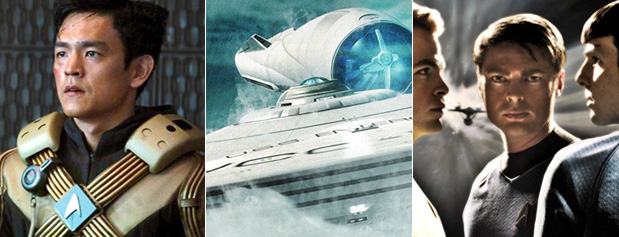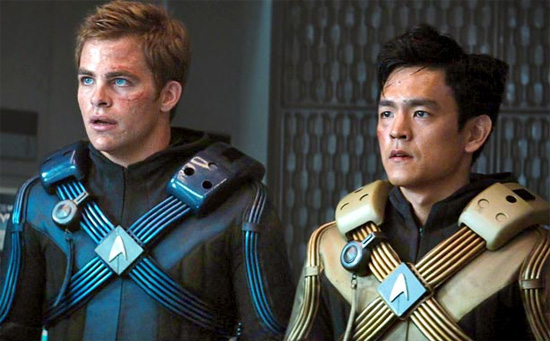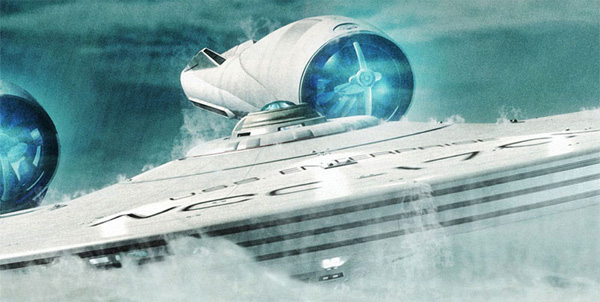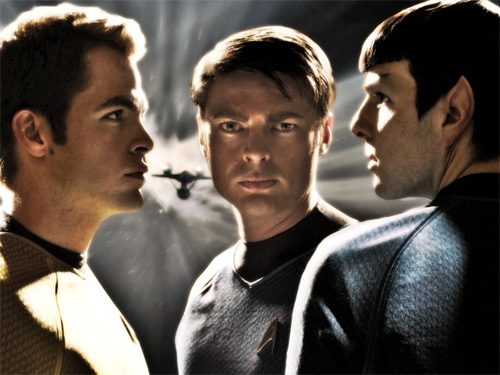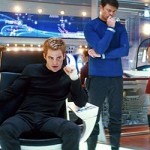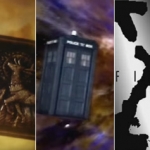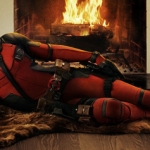Now that JJ Abrams’s second Trek movie has been out for a while, it’s time for me to sit back in the comfort of my organic and ergonomic computer arm chair and do some Monday morning quarterbacking by answering the question, once and for all, whether giving the Star Trek football to JJ Abrams has been good or bad for the Star Trek franchise. Here’s my list of the good, the bad, and the weird of the Star Trek Abramsverse.
The first thing I have to do is misquote Abrams and paraphrase the things he has said in an attempt to get inside his head and explain to myself why he has taken the approach he has taken. I heard somewhere that he said he didn’t like Trek that much as a kid (I think it was during this interview on the Daily Show).
He thought it was too philosophical or something, but then he kind of saved himself by saying he gets it now that he’s older and more mature. So that’s cool, but Star Trek movies have been plagued by directors that just didn’t respect the franchise on the one hand.
Anyway, here we go: the good, the bad, and the bizarre.
Copying Star Wars – Both Good and Bad
It’s inevitable that Abrams, who really is a Star Wars guy, would let a bit of the Wars bleed into his Trek. But Abrams went nuts with the Star Fleet uniforms that look like Imperial uniforms, Sulu fencing like a Jedi instead of fencing like Errol Flynn, space ships landing on the planet surface (like the Millennium Falcon) instead of being SPACE ships that have to stay in orbit (hence the transporter thing), and his insistence that Klingons have to wear cheap Darth Vader masks.
And that’s just off the top of my head. The good part is that Abrams updated the style of the original show from Styrofoam rock slides and matte painting backdrops and made it exciting and action packed. The bad part is that he had 50 years of fictional universe for inspiration, and he kind of ignored all of it to copy the one other franchise that always gets compared to Trek.
Nonstop Action – Good and Bad and Weird
The number one complaint from people who don’t like Trek used to be there is no action. How do you remedy this? You add some action. That’s the good part, which is that Abrams has mastered action sequences and funneled that into his Trek movies. Star Trek now is a fun ride, as opposed to being a long hard slog. The bad part is that, in storytelling, you need time to regroup. Otherwise, there is no emotional impact to the action. On top of that, if you concentrate solely on action, then you have an action movie, not a Star Trek movie.
So the bad part is that Abrams went too far in the other direction. It’s also just weird. How many ways can you get the characters to hang from high places before it becomes a cliché? A whole lot, according to Abrams (Note to all redshirts: do a lot of pull-ups).
Fanboy Moments – Bad
There are plenty of moments that make you think, at first, “Oh cool!” but upon further reflection you think, “That was something I’d see in a beginner fan fiction story. How lame.” For example, what’s with the Enterprise being built in the background of Kirk’s hometown in the first movie? It is well established from the original series that Federation ships are built in orbital space docks. Now we see them built not only on the ground, but by coincidence, in Kirk’s home town? That’s just stupid.
Let’s see what Hitler has to say on the subject:
Dead Red Shirts – Good
The Original Series established a tradition of extras dying for no good reason. It became such a classic plot device that even people who know nothing about Trek reference red shirts. John Scalzi even wrote an entire novel based on the concept. But then along came The Animated Series, The Next Generation, Deep Space Nine, Voyager, and Enterprise. Five additional shows, and no love for the red shirt cliché. It’s about time someone corrected that, and Abrams has obliged. What makes it even cooler is the creative ways in which these poor souls get offed. In the original series, they got stabbed by rubber knives or shot by plastic phaser cannons. But the new question is, how can you make it so that people don’t realize until later that it’s a red shirt moment?
For example, in the first movie, the red shirt is wearing a red space suit. Does that count? Yes, it counts. In the second movie, Scotty asks “are you a contractor, or regular Star Fleet?” before opening the hull and shooting the dude into space. Does it count if he was a contractor (it’s also funny if you’ve seen the Star Wars rant from Kevin Smith’s Clerks) and wasn’t wearing even red? Yes, it counts. (It’s a shame Joss Whedon couldn’t take a crack at Star Trek, seeing as how killing off characters for no good reason is kind of his thing.)
Holes in the Plot – Bad
Star Trek fans are famous for nitpicking details. Of all franchises to have plot holes, this is the worst to choose. Probably more the fault of the script writers than Abrams himself, I’ll admit, but Abrams could have stepped in and said “Wait, if the problem is that the natives noticed them coming out of the ocean, how did they get into the ocean without being noticed in the first place?” It’s not like we’re rebooting Lost in Space.
Ignoring the Well-Established Rules of the Fictional Technology – Bad
The original series established the rules of the technology for storytelling purposes. Sure, they consulted with NASA engineers and whatnot, but in the end, you make the rules of a Science Fiction story for the purpose of telling an interesting story. And because you made it all up out of thin air, you have to stay consistent with those rules. For example, in the original show, you could not use the transporter on people unless they had their comm badge. This is helpful for establishing situations, for example, where our hero (usually Kirk) could just be transported out of the prison the bad guys have stuck him in, but he doesn’t have his comm badge, so he has to seduce the female guard to get her to let him out.
There are a bunch of other examples where Abrams straight up ignores the well established rules of Star Trek “technology.” You can always use a device or a throw away line to explain it, as Abrams does. But if you do it too much, then you just become some other random science fiction story. You could probably get away with it with Star Wars, since the appeal of Star Wars has little to do with nitpicking the details. But not with Trek.
Keeping the Bromance between Kirk, Spock, and McCoy – Good
Star Trek II: The Wrath of Khan set the foundation for the bromance part. The Original Series, of course, evolved into largely showing the three way interaction between McCoy (the emotionally driven character), Spock (the logically driven character), and Kirk (the mediating force between the two), with the bromance always being there under the surface. But Khan put the bromance part into overdrive. Ever since then, it’s been a central part of the franchise. Good call, Abrams, to not ignore that piece of our beloved Star Trek.
Expanding the Importance of Supporting Characters – Good and Weird
Uhura, Sulu, and Chekov have bigger roles in the Abrams Trekverse. This is good stuff. Hard core fans always wanted to see more about the rest of the crew, which explains the fan films, slash fiction, and wildly popular licensed novels. The weird part is that Abrams does this by making Kirk a Captain straight out of the Academy, Chekov an 18-year-old pilot who gets appointed to Chief Engineer when Scotty quits instead of promoting the number two engineering guy like a normal Captain (who wasn’t straight out of the Academy) would do, or any number of other weird ways to give the other actors more screen time.
But at least we get to see the Uhuru/Spock romance blossom. Shutting that down was one of the great tragedies of The Original Series.


